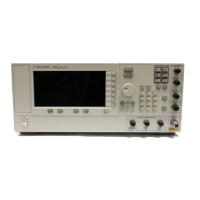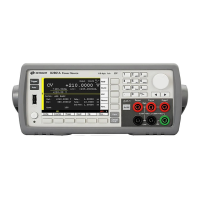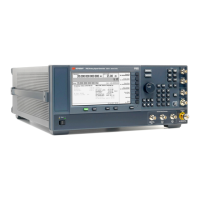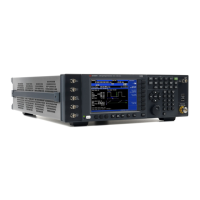7Tutorial
352 Keysight 33210A User’s Guide
Output Amplitude Control
The Keysight
33210A
uses a variable reference voltage to control the signal
amplitude over a 10 dB range. As shown in the simplified block diagram below,
the output of the waveform DAC goes through an anti-aliasing filter. Switching
circuitry selects either the waveform output or the output of the separate square/
pulse DAC. Two attenuators (-10 dB and -20 dB) are used in various combinations
to control the output amplitude in 10-dB steps over a wide range of amplitude
values (10 mVpp to 10 Vpp).
Note that the dc offset is summed with the ac signal in the output amplifier. This
allows relatively small ac signals to be offset by relatively large dc voltages. For
example, you can offset a 100 mVpp signal by almost 5 Vdc (into a 50Ω load).
When changing ranges, the
33210A
switches attenuators such that the output
voltage never exceeds the current amplitude setting. However, momentary
disruptions or “glitches” caused by switching can cause problems in some
applications. For this reason, the
33210A
incorporates a range hold feature to
“freeze” the attenuator and amplifier switches in their current states. However, the
amplitude and offset accuracy and resolution (as well as waveform fidelity) may
be adversely affected when reducing the amplitude below the expected range
change.
Variable
Vref
Waveform
DAC
Anti-Aliasing
Filter
Switching
Circuitry
Attenuators
0 dB or
-10 dB
0 dB or
-20 dB
Switching
Circuitry
Main
Output
Output
Amplifier
0 dB or
+20 dB
DC Offset
DAC
Square/Pulse
DAC
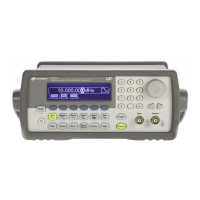
